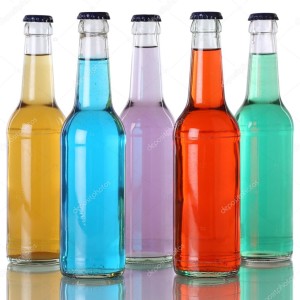
Can we imagine the world without the bright hues of various colours? Colours make the world more attractive, fresh and aesthetic. Colours improve the appearance of not only the clothes, homes, offices, and food but also cars, toys, beauty products, waxes, paints, etc. A correct shade of colour as per the area of application can be a positive selling point for a product making it easily marketable.
Colouring of food to make it tempting is an old concept. These colours can be natural – sourced from nature like plants, animals or soil. For example turmeric, saffron, caramel, etc. In addition to the natural colours, the food colour manufacturers are making synthetic colours like sunset yellow or blending two or more colours like chocolate brown. These are used to make products such as jams, juices, candies, cakes, etc. more attractive. For consumer safety the food colours have to pass strict quality standards and should be approved by the FDA.
Moving to pigments for paint, their usage originated around 18th century when the Egyptians started using soil pigments. Pigments are an essential component of the paint industry. Paints are made by dispersion of coloured pigments in a suitable medium. Pigments give colour and opacity to the paint. They also protect the paint from harsh environmental conditions such as heat and moisture. Some special pigments also give metallic finish to the paint. They offer economical paint options for commercial and industrial applications. We use such paints to decorate our homes, paint our cars and roads etc. They are also used to make colourful toys and make children’s’ play area more attractive with vibrant, eye catching slides, jungle gym, etc. The paint experts design paints which are durable, easy to apply, give a perfect shade and opacity. The paint making is a four step process which involves firstly the mixing of pigment and the medium, grinding to coat each pigment particle, adding of thinners and then tinting. Pigments are of different types like:
- Natural inorganic or earth pigments which show good light fastness viz. Umber
- Synthetic inorganic or mineral pigments viz. Titanium dioxide which is an excellent whitener
- Natural organic or plant based pigments like Indigo or saffron
- Synthetic pigments like diazo colours
Another colouring variant which has a wide application in adhesives, automobiles, cleaning products, waxes, hair dyes, inks, lubricants, plastics, gold imitation, glass colouring etc. are solvent dyes. These dyes are soluble in organic solvents. Solvents like aniline or chrome are mostly used. These are synthetic dyes known for their accurate shades, colour fastness, excellent chemical properties and cost effectiveness. The solvent dyes can have special use in textiles to get a wrinkle free cloth. Some examples of solvent dyes are Solvent Red 24, Solvent Yellow 124.The fuel dyes are a type of solvent dyes with varying light fastness. They are used to colour hydrocarbon fuels. There are a number of solvent dye manufacturers working towards formulating solvent colours which are safe for users as well as the environment.